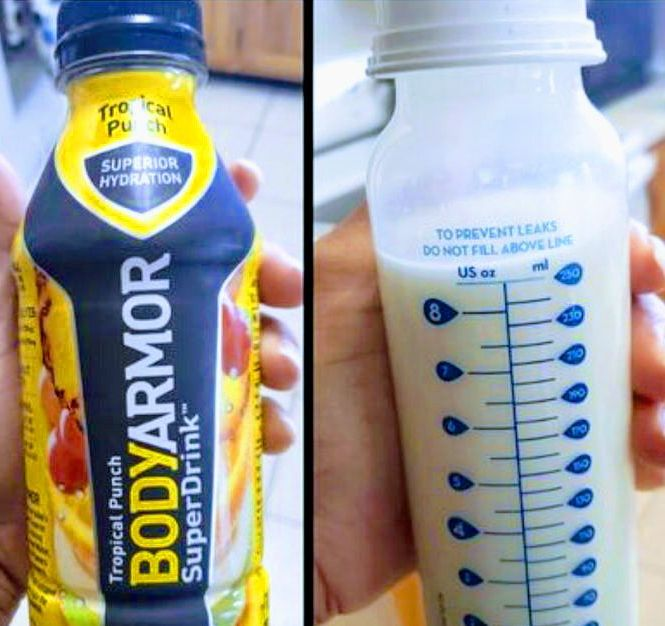How Many Body Armor A Day For Breastfeeding

The question of how many doses of body armor a breastfeeding parent can receive daily is a complex and deeply misleading one, reflecting a concerning misinterpretation of available health information. The confusion likely stems from discussions surrounding nutritional supplements or medications taken by breastfeeding individuals, and the need to understand their potential impact on the infant through breast milk. This article aims to clarify the misinformation and provide accurate, evidence-based guidance on safe practices during breastfeeding.
This is not about literal "body armor". The term likely refers to the intake of supplements, medication or even food ingredients thought to be protective, but whose safety and appropriate dosage during breastfeeding are crucial to understand.
Nut Graf: It is critical to dispel the misinformation that links "body armor" doses to breastfeeding. This article will explore the factors influencing the safety of substances transferred through breast milk, discuss how healthcare providers make informed decisions, and emphasize the importance of professional guidance to ensure infant and maternal well-being.
Understanding Medication and Supplement Transfer Through Breast Milk
The vast majority of medications transfer into breast milk to some extent. However, the crucial factor is the amount that reaches the infant and its potential effects.
Many medications are considered safe for breastfeeding because the infant receives only a tiny fraction of the maternal dose. Factors influencing transfer include the drug's molecular weight, its ability to bind to proteins, and its half-life.
Supplements are also a concern. Some herbs and vitamins can be beneficial, but others may be harmful to the infant.
Factors Influencing Infant Exposure
Several factors influence how much of a substance the infant actually receives via breast milk. These factors include the mother's dose, the frequency of breastfeeding, and the infant's age and health.
Premature infants or those with certain medical conditions may be more vulnerable to the effects of medications. The timing of medication intake relative to breastfeeding sessions also matters; taking a medication immediately after breastfeeding can minimize infant exposure.
Furthermore, the infant's ability to metabolize the substance influences the effects. Infants have immature organ systems compared to adults.
Consulting Healthcare Professionals
The most reliable source of information is always a healthcare professional. This includes physicians, lactation consultants, and pharmacists.
These professionals can assess the specific situation, considering both the mother's and the infant's health. They can also research the safety of medications and supplements using reliable databases and resources.
Healthcare providers use resources such as LactMed, a database maintained by the National Library of Medicine, which provides information on drug levels in breast milk and potential infant effects. They also consider the risk-benefit ratio of a particular treatment. For example, if a medication is essential for the mother's health, the potential benefits may outweigh the risks to the infant.
Evaluating the Risk-Benefit Ratio
Choosing the right medication or supplement involves carefully evaluating potential risks and benefits. In some cases, alternatives may be available.
Healthcare providers can explore options with shorter half-lives or those that are poorly absorbed by the infant's gut. Sometimes, timing the medication dose relative to breastfeeding can significantly reduce infant exposure. "Pump and dump," where breast milk expressed while the mother is taking medication is discarded, is another option, though not always necessary or recommended.
It's important to note that many common medications, like certain pain relievers and antibiotics, are considered safe for breastfeeding. Open communication with healthcare providers is key to identifying safe and effective options.
Addressing Misinformation and Seeking Reliable Sources
Misinformation about breastfeeding and medication safety is common online. It's crucial to rely on credible sources of information.
Websites of reputable medical organizations and government health agencies are usually reliable. Always be wary of advice from unreliable sources, such as social media groups or blogs with no medical backing.
"Breastfeeding is a natural process, but that does not mean it's always simple, especially when considering medication or supplement use," says Dr. Sarah Miller, a pediatrician specializing in lactation consultation. "Always consult a healthcare professional before taking any new substance while breastfeeding."
Long-Term Safety and Monitoring
Even when a medication or supplement is deemed safe, monitoring the infant for any adverse effects is crucial. Watch for changes in behavior, feeding patterns, or bowel movements.
Any unusual symptoms should be reported to a healthcare provider immediately. Continuous monitoring and open communication between the mother, the infant's pediatrician, and other healthcare professionals are essential for ensuring the safety and well-being of both.
Researchers are continuously conducting studies to assess the long-term effects of medication exposure through breast milk. As new evidence emerges, guidelines and recommendations may change.
Conclusion: Prioritizing Informed Decision-Making
The concept of a daily "body armor" dosage for breastfeeding is misleading and should be avoided. Breastfeeding parents should focus on evidence-based recommendations from healthcare professionals.
Informed decision-making, grounded in accurate information and professional guidance, is the cornerstone of safe practices during breastfeeding. By prioritizing the health and well-being of both the mother and the infant, we can ensure a positive and healthy breastfeeding experience.
Ongoing research and continuous communication with healthcare providers will continue to enhance our understanding of medication and supplement safety during breastfeeding. This contributes to the creation of a healthy environment for both the breastfeeding parent and their baby.













.jpg?format=750w)

.jpg?format=1500w)


